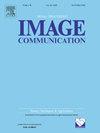基于多尺度光照估计的自适应结构补偿增强
IF 2.7
3区 工程技术
Q2 ENGINEERING, ELECTRICAL & ELECTRONIC
引用次数: 0
摘要
在现实场景中,照明条件通常是可变的和不可控的,例如不均匀的照明,低照明和过度曝光。这些不受控制的照明条件会降低图像质量和可见度。然而,大多数现有的图像增强技术通常是为特定的照明条件而设计的。因此,当应用于图像在不受控制的照明,这些技术容易导致能见度不足,失真,过度曝光,甚至信息丢失。在本文中,为了解决现有方法的局限性,我们引入了一种创新和有效的方法,通过自适应结构补偿来增强非受控照明图像。首先,提出了一种用于光照估计的联合滤波算法,有效地消除了光照估计过程中的纹理、边缘和噪声干扰;其次,提出了一种多尺度光照估计算法,用于构造结构补偿图。然后使用该地图来控制图像不同区域的亮度补偿。最后,设计了两阶段补偿融合策略,自适应重建图像亮度分布,有效提高图像可见性。大量的实验结果表明,我们的方法在提高非受控光照条件下图像的质量和可见性方面优于一些最先进的方法。本文章由计算机程序翻译,如有差异,请以英文原文为准。
Adaptive structural compensation enhancement based on multi-scale illumination estimation
In real-world scenes, lighting conditions are often variable and uncontrollable, such as non-uniform lighting, low lighting, and overexposure. These uncontrolled lighting conditions can degrade image quality and visibility. However, the majority of existing image enhancement techniques are typically designed for specific lighting conditions. Consequently, when applied to images in uncontrolled lighting, these techniques are prone to result in insufficient visibility, distortion, overexposure, and even information loss. In this paper, to address the limitations of existing methods, we introduce an innovative and effective method for enhancing uncontrolled lighting images through adaptive structural compensation. Firstly, a joint filtering algorithm for illumination estimation is developed to effectively mitigate texture, edge and noise interference during illumination estimation. Secondly, we developed a multi-scale illumination estimation algorithm for the purpose of constructing a structural compensation map. This map is then used to control brightness compensation for different areas of the image. Finally, a two-stage compensation fusion strategy is designed to adaptively reconstruct the brightness distribution and effectively improve image visibility. Extensive experimental results indicate that our method outperforms some state-of-the-art approaches in improving the quality and visibility of images under uncontrolled lighting conditions.
求助全文
通过发布文献求助,成功后即可免费获取论文全文。
去求助
来源期刊

Signal Processing-Image Communication
工程技术-工程:电子与电气
CiteScore
8.40
自引率
2.90%
发文量
138
审稿时长
5.2 months
期刊介绍:
Signal Processing: Image Communication is an international journal for the development of the theory and practice of image communication. Its primary objectives are the following:
To present a forum for the advancement of theory and practice of image communication.
To stimulate cross-fertilization between areas similar in nature which have traditionally been separated, for example, various aspects of visual communications and information systems.
To contribute to a rapid information exchange between the industrial and academic environments.
The editorial policy and the technical content of the journal are the responsibility of the Editor-in-Chief, the Area Editors and the Advisory Editors. The Journal is self-supporting from subscription income and contains a minimum amount of advertisements. Advertisements are subject to the prior approval of the Editor-in-Chief. The journal welcomes contributions from every country in the world.
Signal Processing: Image Communication publishes articles relating to aspects of the design, implementation and use of image communication systems. The journal features original research work, tutorial and review articles, and accounts of practical developments.
Subjects of interest include image/video coding, 3D video representations and compression, 3D graphics and animation compression, HDTV and 3DTV systems, video adaptation, video over IP, peer-to-peer video networking, interactive visual communication, multi-user video conferencing, wireless video broadcasting and communication, visual surveillance, 2D and 3D image/video quality measures, pre/post processing, video restoration and super-resolution, multi-camera video analysis, motion analysis, content-based image/video indexing and retrieval, face and gesture processing, video synthesis, 2D and 3D image/video acquisition and display technologies, architectures for image/video processing and communication.
 求助内容:
求助内容: 应助结果提醒方式:
应助结果提醒方式:


